Service innovation is the process of collecting and implementing ideas that improve how companies design and deliver services.
By establishing the structures and processes needed to innovate, companies can:
Sustain innovation by continuously uncovering and improving weaknesses in their existing service lineup.
Protect themselves against disruptive innovations from competitors.
However, based on our experience as innovation consultants, we’ve seen that while most companies have some form of innovation process — usually a Slack channel, email address, or web form where employees share ideas — they struggle to turn those ideas into progress and growth. Ideas get collected, then forgotten.
In this article, we review the approach we used to implement productive innovation processes within service-based companies that actually generate ROI. We then highlight the key mistakes that cause companies to fail in establishing productive innovation processes.
InnovationCast is an innovation management platform that has enabled companies like DHL, Visa, and Vodafone to launch productive innovation processes. Book a quick demo to see how InnovationCast can support your innovation efforts.
Summary of the Service Innovation Process
There are five key steps to setting up a service innovation process within an organization:
Idea collection: Service providers start by tapping into a pool of highly educated individuals with varying skill sets for ideas. This includes employees, customers, partners, researchers, and other stakeholders.
Idea refinement: Ideas are made accessible to other participants. They can examine ideas, share their opinions, point out potential areas of concern, and build upon the author’s knowledge.
Idea evaluation and prioritization: Ideas are then sent to an evaluator who uses scorecards and evaluation models to determine whether to greenlight them.
Idea validation and impact tracking: For disruptive, high-risk, high-reward ideas, companies wouldn’t want to spend a lot of resources on implementation without first reducing some of those risks. During validation, teams conduct experiments to mitigate risk factors and build confidence in the idea.
Implementation: The final step in the service innovation process is implementing the innovation. This involves planning implementation steps such as setting timelines, allocating resources, assigning responsibilities, and tracking progress.
Step 1: Collect High-Quality Ideas From Innovation Participants
The first step to capturing growth from service innovation is to identify areas where current services can be improved and to spot market opportunities where new services can be launched.
In our experience, companies that draw on the insights of highly educated team members across diverse roles, such as engineers, marketers, support teams, and researchers, tend to generate the most well-rounded and impactful ideas. Each group brings a unique perspective on customer needs, operational challenges, and untapped opportunities.
As a result, the first step companies should take is to establish a system that enables employees and outside participants to easily share ideas.
However, the nuances, features, and subtle details of how you collect ideas significantly influence their quality and your ability to engage innovation participants.
Many companies take an unfocused approach to idea collection. They set up a Slack channel or email address and ask employees to contribute anything that comes to mind.
The shortfalls of this approach are twofold:
Companies collect misaligned ideas: Because employees are unaware of the company’s initiatives and lack access to detailed information on each focus area, they tend to submit ideas that are generic or misaligned.
Companies struggle to engage participants: Employees have likely seen suggestion boxes introduced countless times before, only for their ideas to go unnoticed. They believe that if they share ideas, their hard work will go to waste because the company isn’t serious about innovation.
How InnovationCast Helps Companies Collect High-Quality Ideas Fast
Instead of relying on a Slack channel or email inbox, we advise clients to collect ideas through Innovation Challenges.
Innovation Challenges are a strategic idea collection feature within InnovationCast that let innovation managers and stakeholders create posts outlining their priorities and invite participants to brainstorm, research, and share ideas.
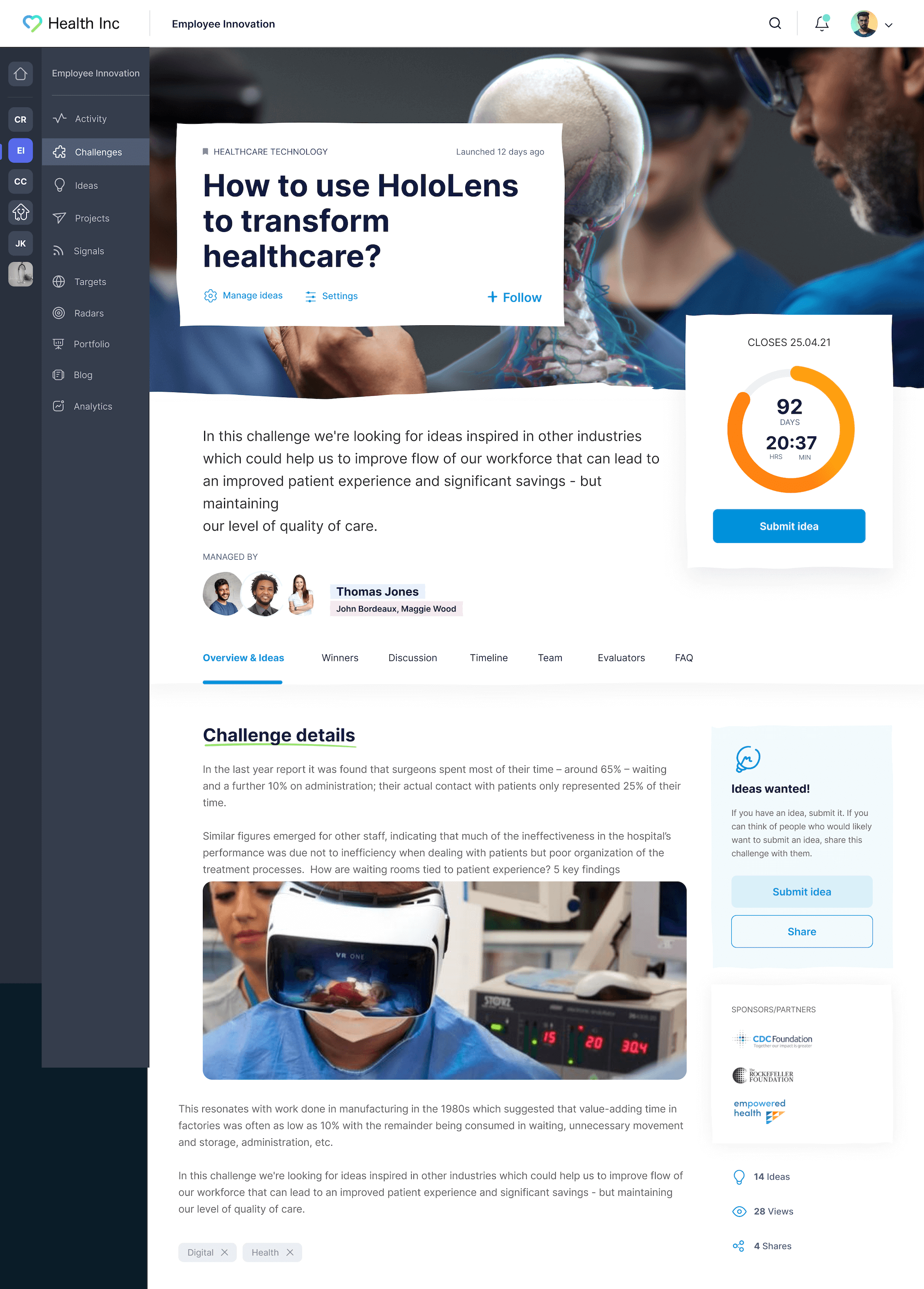
Participants can explore the materials within the challenge — videos, articles, FAQs, and infographics — and contribute their ideas.
Once someone shares an idea, they have full visibility on its progress. They’re notified if refinements are needed, if their idea is chosen for validation and implementation, and about the impact it’s making.
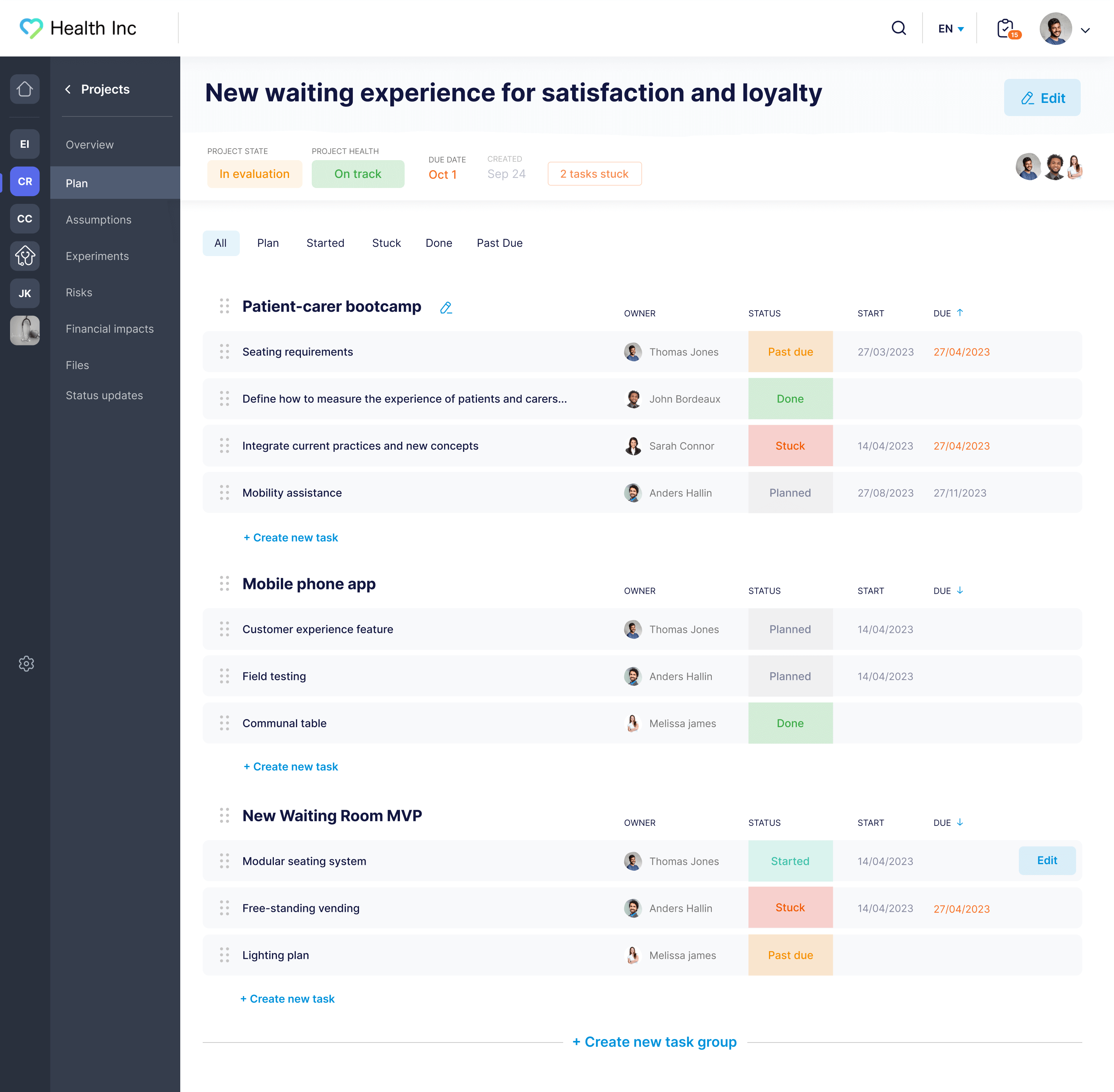
There are two key advantages of using challenges over open idea boxes:
Companies collect more relevant ideas: The materials inside the challenge educate participants on the company’s focus areas and enable them to gain a deeper understanding of its nuances. Companies end up with more relevant and specific ideas.
Companies show employees that they are serious about innovation: Because employees have full transparency into what happens to their ideas, they can see the company working on their idea and have peace of mind knowing their ideas aren’t going to waste. This helps engage employees.
To collect ideas externally, companies can leverage our partnerships with HeroX, nlmtd, and Plug & Play — connecting them with researchers, scientists, university students, startups, and industry specialists.
Read more: 5 Detailed Innovation Challenge Examples & Best Practices
Step 2: Refine Ideas Using the Intelligence of Internal & External Participants
For ideas focused on straightforward service quality improvements, such as customer loyalty cards or minor UX tweaks, it's perfectly fine to send them directly to evaluation and then implementation.
However, completely new service sector ideas are complex and require refinement from multiple stakeholders.
For example, when introducing a new service idea:
Customers need to provide feedback on tailoring the idea to their pain points.
Employees in different departments need to offer insight into what it would require from them to deliver the service and whether it's practical.
Hiring managers need to consider whether they’d need to hire additional staff.
It’s unrealistic to think that one author can brainstorm and submit an idea that encompasses all those considerations and perspectives.
The best innovation systems let all relevant participants access each other's ideas and build on the author’s insights. This refines value propositions with the brainpower of a diverse group of experts.
How InnovationCast Helps Companies Utilize the Expertise of All Employees to Refine Ideas
With InnovationCast, innovation managers can display ideas on users’ newsfeeds, allowing them to see their peers’ ideas when logging in.
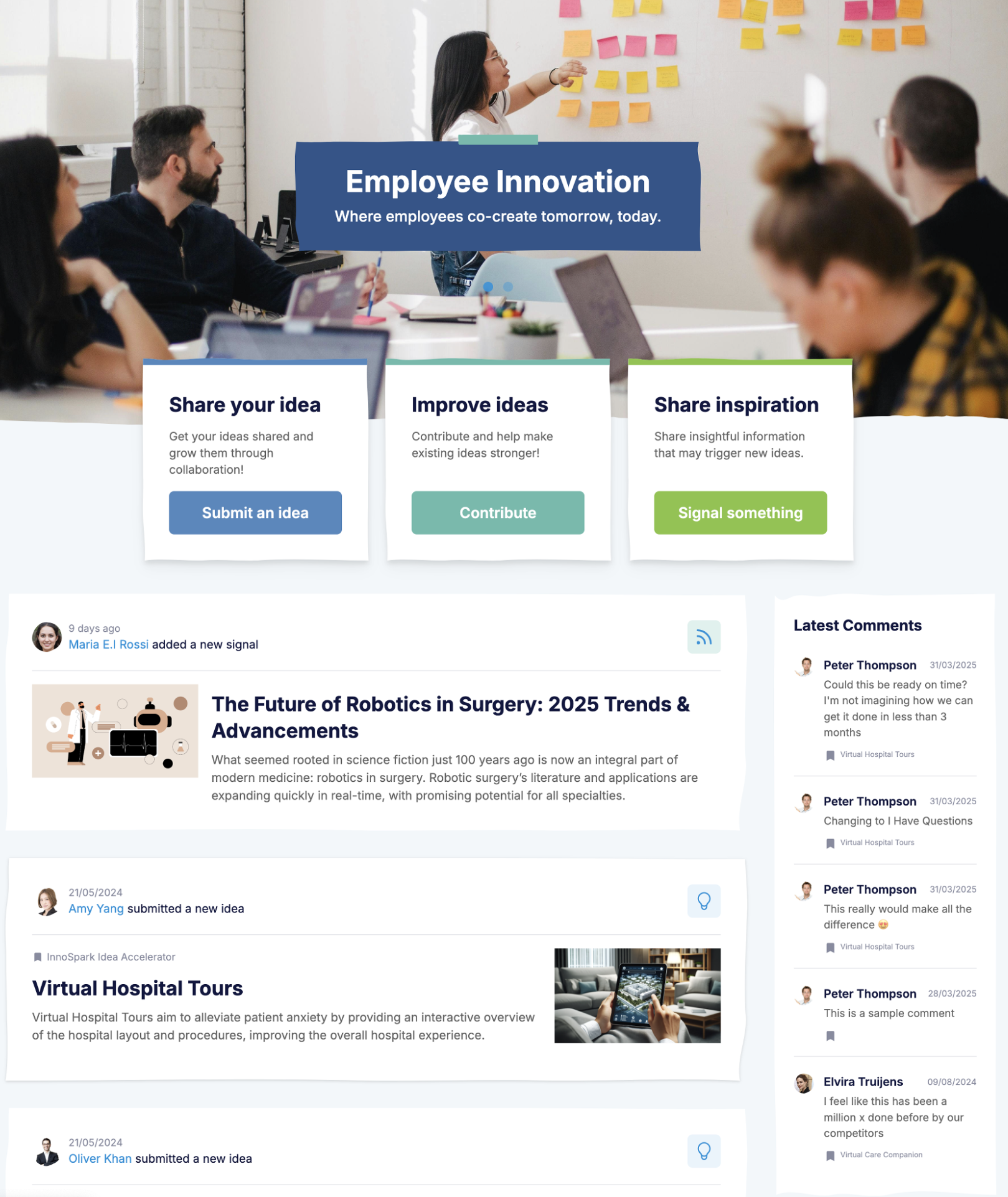
Users can view ideas submitted by colleagues, vote on whether an idea looks good or needs work, and leave constructive feedback.

From there, colleagues collaborate to refine ideas.
InnovationCast automatically saves each version before changes are made, acting as a version control and making tracking advancements easy.
When feedback shapes the final idea, authors can award commenters a “Significant Contribution” tag. This tells the community that feedback is valued and helps stakeholders identify the most impactful comments in idea threads.
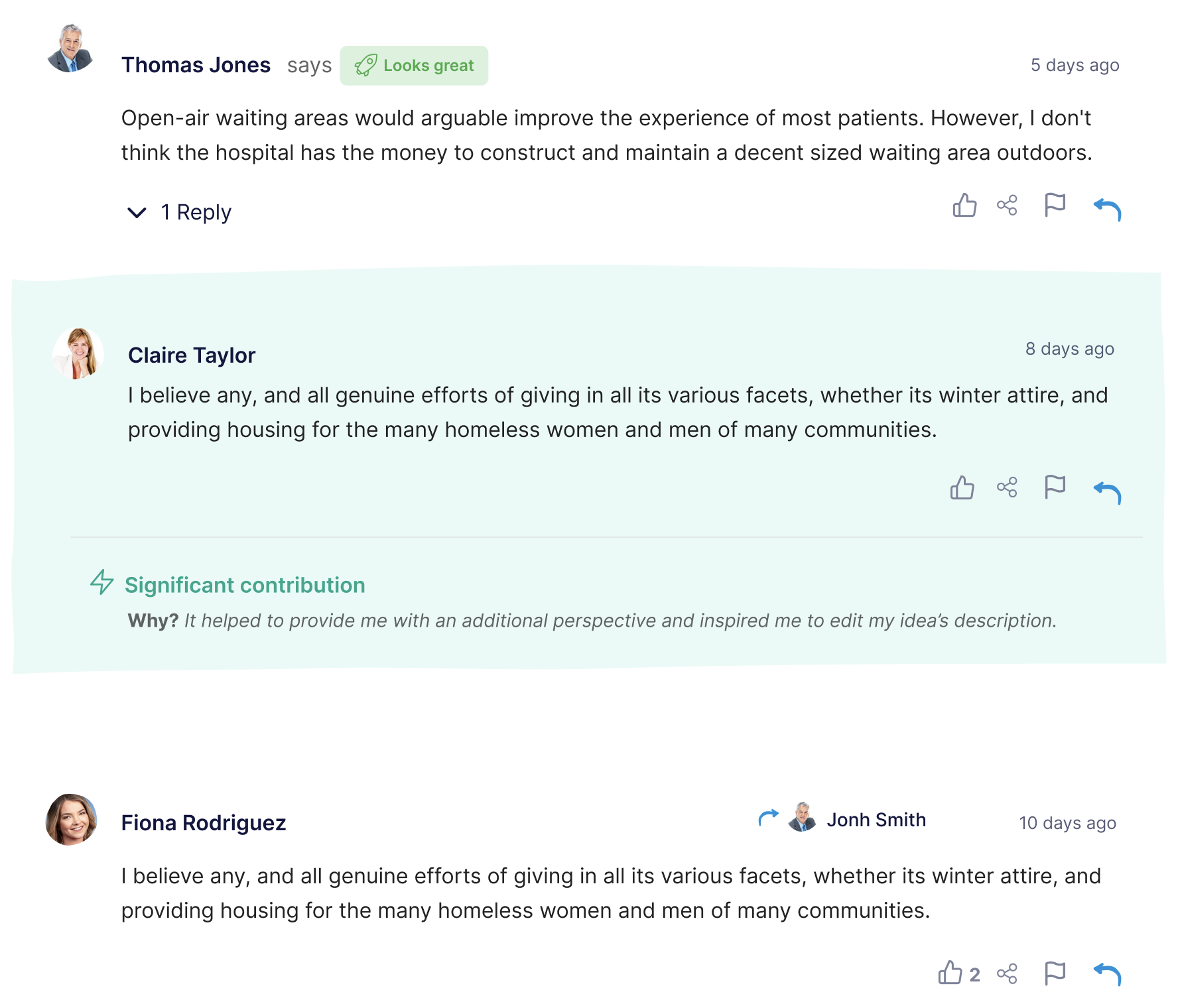
Step 3: Send Ideas to a Subject Matter Expert for Evaluation
Evaluation is the process of examining an idea’s feasibility, customer value, risk, and competitive advantage to determine whether it should be implemented. Generally speaking, ideas are sent to a subject matter expert, who uses an evaluation model to score ideas.
Evaluation models comprise questions that assess key factors about an idea. The evaluator reviews the information provided by the idea author and scores each question on a scale from 1 to 10. After all questions are answered, the evaluator tallies their scores and sends ideas that meet minimum score criteria to implementation.
There are various evaluation models you can use; the most simple to get started is RICE:
Reach: How many customers, users, or stakeholders could this service innovation affect?
Impact: To what extent could this idea improve our service offering or give us a competitive edge?
Confidence: How confident are you that this service or new business model innovation can be delivered successfully and achieve the desired results?
Effort: What level of resources, coordination, and time will be needed to implement this idea?
While evaluation seems straightforward, companies often make key system errors that cause ideas to stagnate.
We see companies managing the entire evaluation process inside their email inbox or intranet systems. They receive and review all ideas through their inbox and manually email authors when an idea is approved, rejected, or needs refinement.
This approach is time-intensive and disorganized. Large companies often handle hundreds of ideas simultaneously, and manually emailing each author can take hours. It's also a hassle to organize all approved, rejected, and refined submissions while tracking their scores.
Evaluators using this ad hoc process end up spending more time emailing authors and organizing their ideas, rather than actually evaluating them.
How InnovationCast Automates the Evaluation Process
Evaluators can log in to InnovationCast and view all the ideas assigned to them — without having to sift through email threads.
With a single click, they can approve, reject, or request changes.
The system then automatically notifies the relevant authors, allowing evaluators to manage hundreds of ideas with minimal effort.
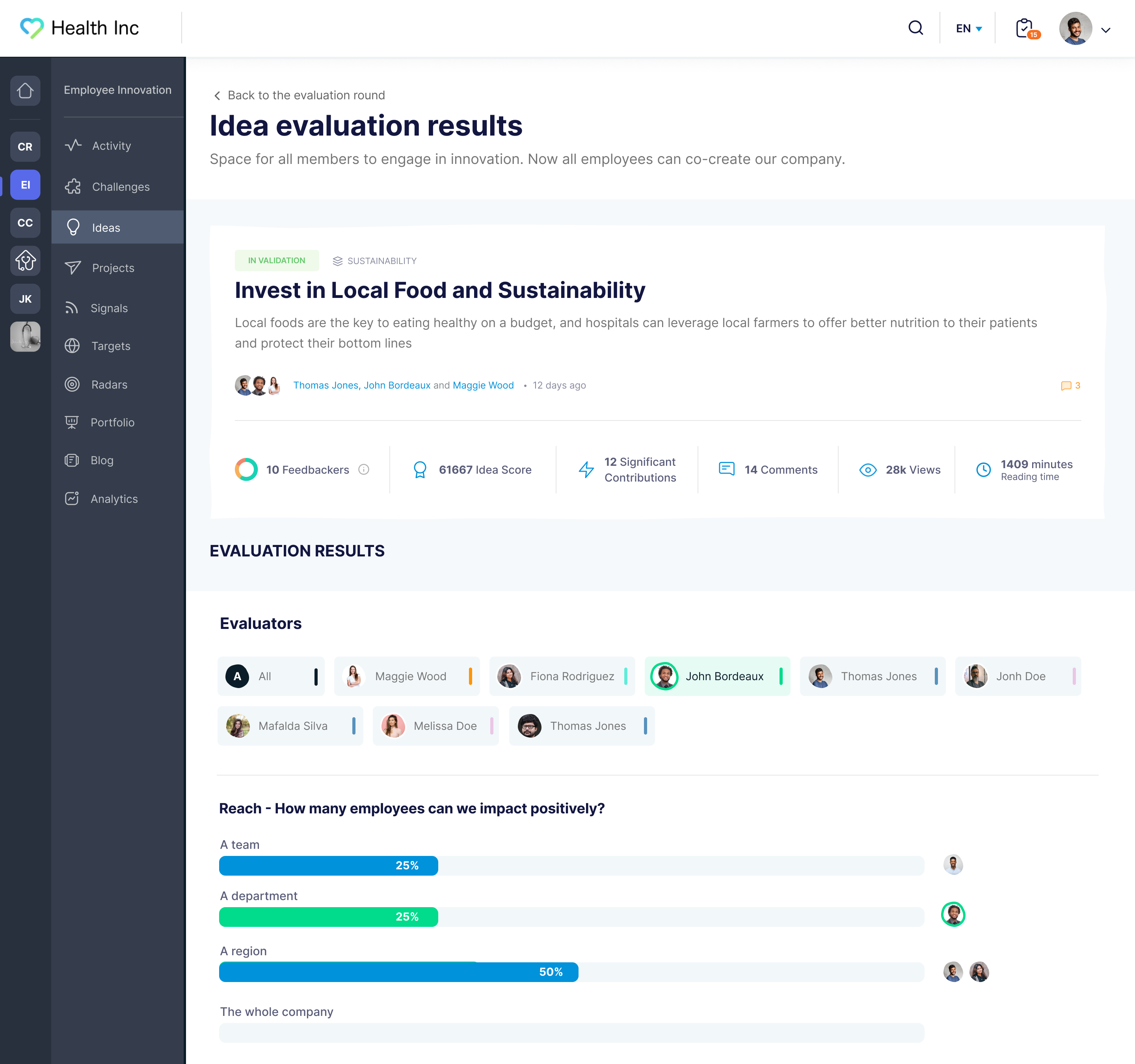
InnovationCast organizes service delivery ideas into clear categories — approved, rejected, or needing refinement — so evaluators can see each idea’s status at a glance.
We provide evaluation models, scorecards, and workflows that guide evaluators’ decisions, highlighting key considerations and relevant data.
Once ideas are approved, they’re sent to top management and key stakeholders, who use InnovationCast’s prioritization features to vote on which ideas to implement first.
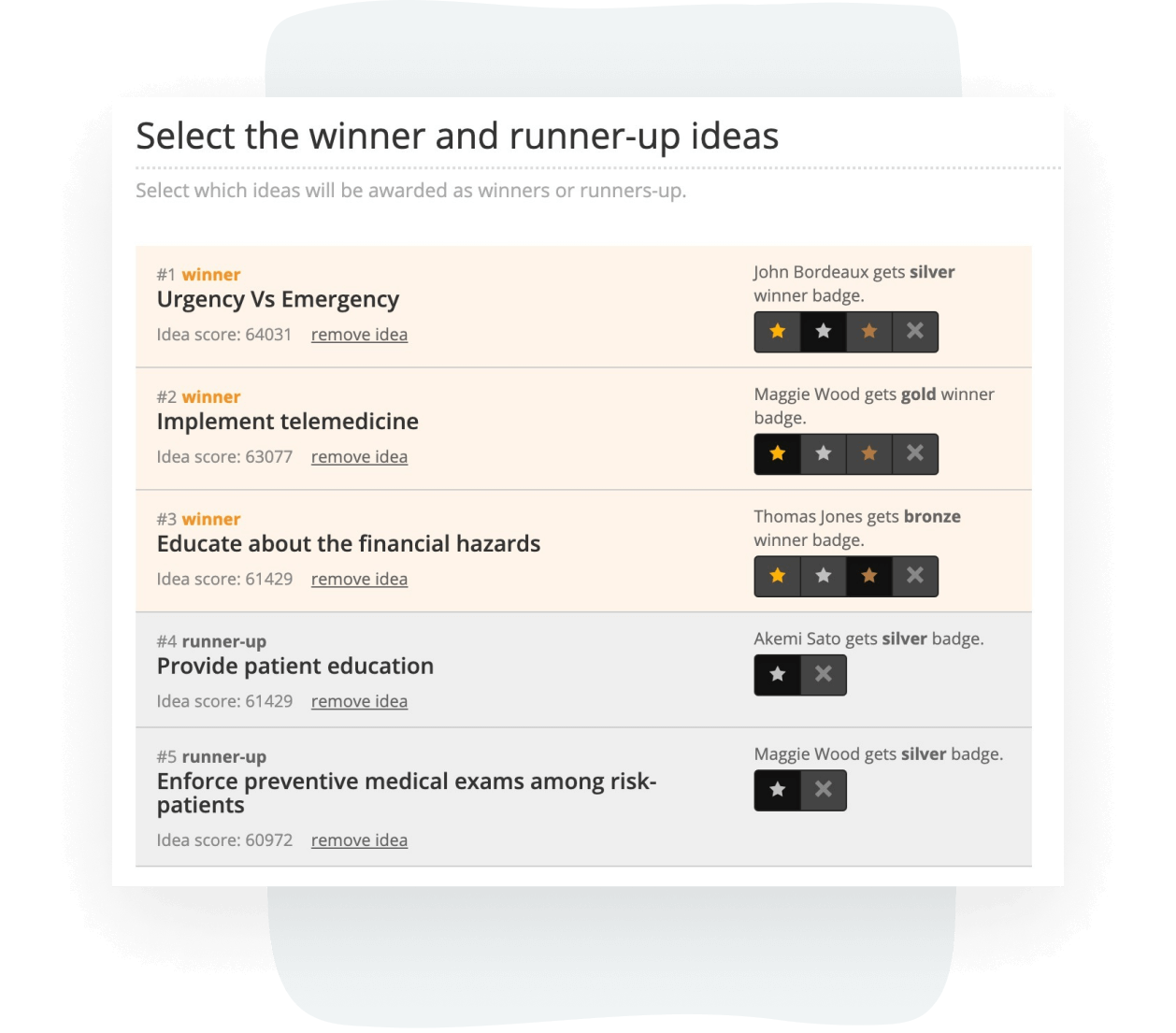
Step 4: Create a Validation Team to Reduce Risk
When a new service idea demands significant resources, carries high failure risk, but could disrupt the industry and capture a large market share, it moves into validation.
Idea validation means running experiments to test key risk factors. The goal is to minimize risk and validate the idea until committing substantial resources to implementation is a sound decision.
For example, if an employee suggests expanding into a new market by launching a new service, validation teams might test key assumptions and risks such as:
Assumption: Customers in the new market have a clear need for this service.
Risk: Little to no demand, resulting in poor customer interaction.
Experiment: Conduct customer interviews or run targeted landing page tests to gauge interest and customer experience expectations.
Assumption: The service business can deliver the new offering at a competitive price point.
Risk: Operational or supply chain costs make it unprofitable.
Experiment: Build a basic cost model and run a real-world pilot to test pricing and delivery feasibility.
Assumption: The company’s brand is strong enough to win trust in the new market.
Risk: New customers are unfamiliar with the brand and hesitant to engage.
Experiment: Test brand perception through surveys or service prototypes.
One mistake we see companies make that derails validation efforts is that they fail to provide teams with sufficient guidance on how to validate ideas. They’ll establish a validation team, usually an engineer, designer, and marketer, and expect them to know how to manage validation.
Validation is a tricky, iterative, and messy process. Most employees lack the skills to plot and prioritize assumptions, design and run experiments, analyze key risk indicators, and pivot based on results. They are engineers, designers, and marketers; they likely don’t have experience managing innovation projects.
How InnovationCast Guides Validation Processes
Companies use our workflows to guide teams through the essential steps of validating ideas.
They outline how to map assumptions, determine which experiments to run, identify key risk indicators, and provide guidance on when and how to pivot — among other key considerations.
These steps differ depending on the types of innovation, so we have separate workflows for:
Continuous improvement ideas
New service development ideas
New product innovation ideas
Business model ideas
Healthcare ideas
Financial service ideas
Digital transformation ideas
And more

We built these workflows based on our experience managing innovation projects, incorporating elements from Lean Startup, Customer Discovery, Service Design, Jobs to Be Done, and other proven innovation methodologies.
During onboarding, we’ll learn about your innovation strategy, goals, and the topics you want ideas on, then customize the workflow’s stages and tasks accordingly.
When designing our workflows, we prioritized configurability — letting innovation managers easily add, remove, or rearrange stages and tasks without any coding.
As validation tasks are completed and teams gather insights (e.g., sales figures, click-through rates, customer acquisition costs), those learnings feed into the InnovationCast reporting dashboard — giving top management clear visibility into the ROI of their investments.
Step 5: Implement the Innovation
Once key risk factors are reduced to an acceptable level, ideas move into the implementation or concept development process.
At this stage, responsibility typically shifts from the innovation team to the project management office or relevant department overseeing execution.
Given the nature of services, smaller continuous improvements — like reducing customer support response times or streamlining appointment booking — can often be implemented directly, for example, by adopting a new scheduling system.
As part of effective service management, companies monitor key metrics after launch, including adoption rates, customer satisfaction, engagement, and revenue. These insights guide future refinements and help assess the innovation’s overall success.
Implement a Customer-centric Service Innovation Process Using InnovationCast
Learn more about how InnovationCast can help your organization set up an innovation process and launch successful service innovations by scheduling a 25-minute demo.

